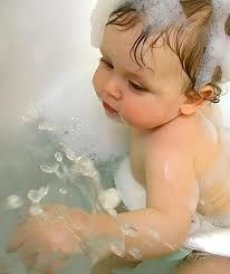New publications
Carcinogens have been found in baby shampoos from Johnson & Johnson
Last reviewed: 30.06.2025

All iLive content is medically reviewed or fact checked to ensure as much factual accuracy as possible.
We have strict sourcing guidelines and only link to reputable media sites, academic research institutions and, whenever possible, medically peer reviewed studies. Note that the numbers in parentheses ([1], [2], etc.) are clickable links to these studies.
If you feel that any of our content is inaccurate, out-of-date, or otherwise questionable, please select it and press Ctrl + Enter.

Carcinogenic substances have been found in Johnson & Johnson baby shampoos. Laboratory tests of baby products were conducted at the request of the non-profit organization "Campaign for Safe Cosmetics".
An independent laboratory has analyzed the composition of a number of cosmetics for children produced by Johnson & Johnson. During the studies, dioxane and quaternium-15 were found in Johnson's Baby and Johnson's Baby shampoos with wheat germ extract, as well as Johnson's Baby "Wet Care" bath foam.
The first of the above substances is listed by US regulatory authorities as a potential carcinogen. The second substance is an antibacterial additive that releases formaldehyde, which is a recognized carcinogen.
In this regard, representatives of the "Campaign for Safe Cosmetics" appealed to the management of Johnson & Johnson with a demand to refuse the use of dioxane and quaternium-15 in the production of cosmetics for children. In response, the manufacturer promised to reduce the concentrations of hazardous substances to undetectable values, and then gradually eliminate their use.
Lisa Archer, head of the Campaign for Safe Cosmetics, said quaternium-15 was no longer used in Johnson & Johnson products destined for the Swedish, Japanese and South African markets.
